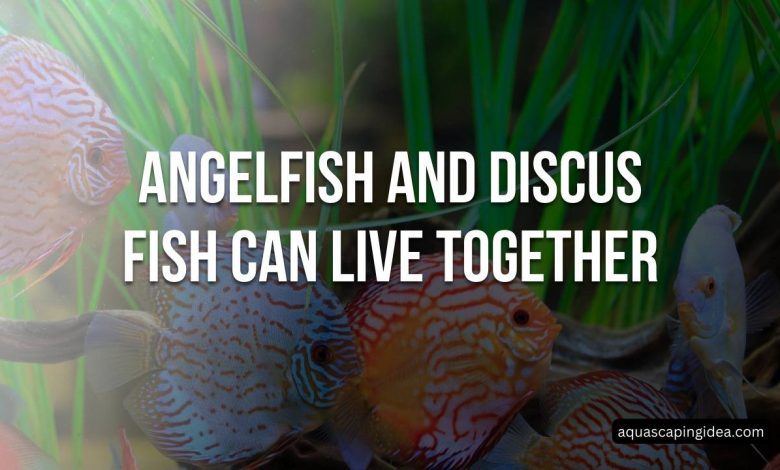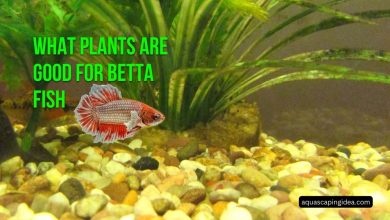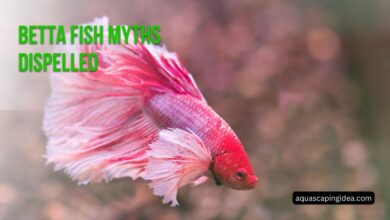Angelfish and Discus Fish Can Live Together?

The captivating world of tropical fish is a kaleidoscope of vibrant colors, intricate patterns, and enchanting behaviors. Among the most sought-after species, angelfish and discus fish stand out as true aquatic gems, captivating hobbyists and enthusiasts alike.
However, the question often arises: can these two magnificent creatures coexist harmoniously in the same underwater realm? The answer is a resounding yes – with the right knowledge and preparation, angelfish and discus fish can indeed live together, creating a breathtaking display of aquatic splendor. In this comprehensive article, we delve into the intricate dynamics of this peaceful cohabitation, exploring their compatibility, care requirements, and expert tips to ensure a thriving and visually stunning aquarium environment.
The Angelfish: Graceful Swimmers with a Gentle Demeanor
Angelfish, scientifically known as Pterophyllum, are among the most recognizable and sought-after freshwater fish. Native to the Amazon Basin in South America, these disc-shaped beauties boast striking vertically elongated bodies adorned with intricate patterns and vibrant colors. Their graceful movements and peaceful temperament have endeared them to aquarists worldwide.
Beyond their visual appeal, angelfish are renowned for their intelligence and adaptability. They are skilled at navigating complex aquarium environments and can learn to recognize their owners, even exhibiting playful behaviors. However, it’s essential to understand that angelfish are semi-aggressive and may become territorial, especially during breeding seasons or when housed with conspecifics (members of the same species).
The Discus Fish: Ethereal Beauties with Sophisticated Needs
Discus fish, or Symphysodon, are often regarded as the “king of the aquarium” due to their regal appearance and captivating behavior. Hailing from the Amazon River basin, these majestic fish are adorned with mesmerizing circular patterns and a broad, laterally compressed body shape. Their vibrant hues range from deep blues and greens to fiery reds and yellows, making them a true spectacle in any aquarium.
While their beauty is undeniable, discus fish are also known for their sensitive nature and specific care requirements. They thrive in soft, acidic water conditions and require a meticulously maintained environment with stable water parameters. Discus fish are generally peaceful, but their territorial instincts can surface during breeding periods or when housed with aggressive tank mates.
Compatibility: Striking the Perfect Balance
When considering keeping angelfish and discus fish together, compatibility is the key factor to ensure a harmonious cohabitation. Both species share several similarities that make them compatible tank mates:
- Peaceful Temperament: Angelfish and discus fish are generally peaceful and non-aggressive, making them well-suited for community aquariums when appropriately housed.
- Water Parameter Requirements: These two species share similar water parameter preferences, thriving in soft, acidic water conditions with a pH range of 6.0 to 7.0 and a temperature range of 82°F to 86°F (28°C to 30°C).
- Diet Compatibility: Both angelfish and discus fish are omnivorous, accepting a varied diet consisting of high-quality flakes, pellets, frozen foods, and occasional live foods.
- Territorial Behavior: While both species can exhibit territorial tendencies, particularly during breeding periods, their behavior is typically manageable when provided with ample space and hiding spots.
However, it’s crucial to consider the potential for aggression, especially among mature or breeding angelfish. To mitigate this risk, it’s recommended to introduce angelfish and discus fish simultaneously into the aquarium or to add the angelfish after the discus fish have established their territory.
Environmental Requirements: Creating the Ideal Aquatic Haven
To ensure the successful cohabitation of angelfish and discus fish, it’s essential to recreate their natural habitat conditions as closely as possible. Here are the key environmental requirements to consider:
- Tank Size: A minimum tank size of 55 gallons (208 liters) is recommended for housing a small group of angelfish and discus fish together. Larger tanks provide more swimming space and better water quality stability, reducing territorial disputes.
- Water Parameters: Maintain soft, acidic water conditions with a pH range of 6.0 to 7.0, a temperature range of 82°F to 86°F (28°C to 30°C), and moderate water hardness (2-10 dGH).
- Filtration and Water Quality: Employ a robust filtration system, such as a canister filter or a combination of mechanical, biological, and chemical filtration, to maintain pristine water quality. Regular water changes (25-30% weekly) are essential to dilute waste and replenish minerals.
- Aquascaping and Decor: Provide ample hiding spots and territories using driftwood, rocks, and live or artificial plants. This prevents territorial disputes and creates a visually appealing environment.
- Substrate: Use a soft, fine-grained substrate, such as sand or fine gravel, to protect the delicate fins and mouths of both species.
- Lighting: Moderate to dim lighting is preferred, as both angelfish and discus fish appreciate subdued illumination. Proper lighting also promotes the growth of live plants and brings out their vibrant colors.
Feeding and Diet Requirements
Providing a balanced and varied diet is crucial for the health and well-being of both angelfish and discus fish. While their dietary requirements are similar, there are a few key considerations:
- Protein-Rich Foods: Both species thrive on a protein-rich diet. High-quality flakes, pellets, and frozen foods like brine shrimp, bloodworms, and beef heart are excellent choices.
- Vegetable Matter: Incorporate a portion of vegetable matter, such as blanched spinach, zucchini, or cucumber, to provide essential fiber and nutrients.
- Live Foods: Occasional live foods, like daphnia or brine shrimp, can provide additional enrichment and encourage natural foraging behaviors.
- Feeding Frequency: Offer small, frequent meals multiple times a day, as both species are grazers and prefer to feed continuously.
- Food Size: Ensure that the food size is appropriate for each species, as discus fish have smaller mouths compared to angelfish.
It’s important to note that overfeeding can quickly degrade water quality, leading to potential health issues and territorial disputes. Monitor feeding carefully and remove any uneaten food promptly.
Tank Mates and Stocking Considerations
While angelfish and discus fish can coexist harmoniously, it’s essential to consider their compatibility with other potential tank mates. Here are some compatible and incompatible species to keep in mind:
Compatible Tank Mates:
- Tetras (e.g., Cardinal, Rummy Nose, Lemon)
- Rasboras
- Corydoras Catfish
- Otocinclus Catfish
- Plecostomus (Bristlenose or Rubber Lip varieties)
Incompatible Tank Mates:
- Aggressive Cichlids (e.g., Oscars, Convicts)
- Large, Boisterous Fish (e.g., Silver Dollars, Tinfoil Barbs)
- Fin Nippers (e.g., Tiger Barbs, Serpae Tetras)
When stocking the aquarium, it’s essential to maintain a proper balance and avoid overcrowding. A general guideline is to allow 1 inch of fish per 1 gallon of water, but this may vary based on the specific species and their adult sizes. Always research the maximum adult size of each species and provide ample swimming space to prevent territorial disputes.
Breeding Considerations
Both angelfish and discus fish are known for their intricate breeding behaviors and parental care. While breeding these species together can be challenging, it is possible with proper preparation and dedicated effort.
Separate Breeding Tanks:
It’s recommended to set up separate breeding tanks for each species, as their breeding requirements may differ slightly, and the presence of other fish can disrupt the breeding process.
Conditioning:
Proper conditioning with high-quality protein-rich foods and stable water parameters is crucial to stimulate spawning and ensure healthy fry development.
Spawning Sites:
Provide suitable spawning sites, such as vertically placed clay cones or ceramic tiles for angelfish and flat, smooth surfaces like slate or terracotta for discus fish.
Parental Care:
Both species exhibit excellent parental care, with parents meticulously caring for their eggs and fry. However, it’s essential to remove the fry from the main tank once they become free-swimming to prevent them from being eaten by the parents or other tank mates.
Fry Rearing:
Separate fry rearing tanks with appropriate water conditions, a gentle sponge filter, and a diet of finely ground foods or commercial fry foods are necessary for successful fry development.
While breeding angelfish and discus fish together can be rewarding, it requires patience, dedication, and a thorough understanding of their specific breeding requirements.
Common Challenges and Solutions
Keeping angelfish and discus fish together can present a few challenges, but with proper preparation and proactive measures, these obstacles can be overcome:
Territorial Disputes:
Provide ample hiding spots, territories, and line-of-sight breaks using driftwood, rocks, and plants to minimize aggressive behavior.
Water Quality Issues:
Maintain a robust filtration system, perform regular water changes, and avoid overfeeding to maintain pristine water conditions.
Disease Transmission:
Quarantine new fish before introducing them to the main tank, and promptly treat any signs of illness to prevent the spread of diseases.
Compatibility Concerns:
Research the temperaments and adult sizes of potential tank mates to ensure a peaceful community.
Feeding Challenges:
Offer a varied diet and consider using separate feeding rings or target feeding to ensure each species receives adequate nutrition.
By addressing these challenges proactively, you can create a harmonious and thriving aquatic environment for your angelfish and discus fish.
Frequently Asked Questions (FAQ)
Can angelfish and discus fish breed together?
No, angelfish and discus fish cannot interbreed as they belong to different genera and species. Successful breeding requires pairing individuals within the same species.
How many angelfish and discus fish can I keep together?
A good starting point is a group of 4-6 angelfish and 4-6 discus fish in a 55-gallon or larger tank. However, it’s essential to consider their adult sizes and provide ample swimming space.
Can I keep angelfish and discus fish with other aggressive fish?
No, it’s not recommended to keep angelfish and discus fish with aggressive species like Oscars, Cichlids, or large, boisterous fish, as they may become targets of aggression.
Do I need to keep the water parameters exactly the same for both species?
While angelfish and discus fish share similar water parameter preferences, it’s advisable to aim for the ideal conditions for discus fish (pH 6.0-6.5, temperature 82°F-86°F) as they are more sensitive.
How often should I perform water changes?
Regular water changes of 25-30% per week are recommended to maintain optimal water quality and dilute waste buildup.
Conclusion
Keeping angelfish and discus fish together is a captivating endeavor that showcases the beauty and diversity of the aquatic realm. By understanding their compatibility, environmental requirements, and care needs, aquarists can create a visually stunning and harmonious underwater ecosystem. With proper preparation, attention to detail, and a commitment to providing a stable and enriching environment, these two magnificent species can thrive together, offering a mesmerizing display of grace, color, and tranquility. Embrace the challenge of this aquatic partnership, and embark on a journey that celebrates the wonders of the underwater world.



